How to Handle the Emotional Numbness of MS Depression
Introduction
When most people think of depression, they picture sadness—tears, despair, hopelessness. But for many people living with multiple sclerosis (MS), depression doesn’t feel like overwhelming sorrow. It feels like... nothing. No joy, no pain—just emotional flatness.
This emotional numbness, often described as feeling “disconnected,” “blunted,” or “detached,” is a common yet underrecognized symptom of MS-related depression. Unlike typical mood disorders, this emotional shutdown is deeply tied to the neurological and immunological changes happening in the MS brain.
In this article, we’ll explore:
- What emotional numbness in MS depression feels like
- Why it happens (biologically and psychologically)
- The difference between numbness and sadness
- Strategies for coping and reconnecting to your emotional world
Want online therapy? Click here.
🧠 What Does Emotional Numbness in MS Feel Like?
You might describe it as:
- Feeling like you’re watching life through a foggy window
- Not reacting to things you used to love or hate
- Being unable to cry, even when you want to
- Feeling like your “spark” is gone
- Living in autopilot
Some people report feeling guilty for not feeling enough: not happy, not sad, not excited—not anything. This detachment isn’t laziness or indifference; it’s a symptom of neurological dysfunction.
🧬 Why MS Can Cause Emotional Numbness
1. Neuroinflammation Disrupts Emotional Processing
MS involves inflammation in the brain and spinal cord. This inflammation can impact areas responsible for emotional regulation, including:
- Prefrontal cortex: decision-making, impulse control, and empathy
- Amygdala: emotional responses, especially fear and anxiety
- Anterior cingulate cortex: motivation and emotional engagement
- Insular cortex: awareness of body and emotion
When these regions are inflamed or damaged by MS lesions, your ability to feel, respond, and interpret emotion is muted.
2. Neurotransmitter Imbalances
MS-related inflammation alters brain chemicals like:
- Serotonin: affects mood, sleep, and pleasure
- Dopamine: motivation, reward, focus
- Norepinephrine: alertness and energy
When these neurotransmitters are dysregulated due to immune activity or medication side effects, emotional dulling can result—even without sadness.
3. Fatigue and Cognitive Overload
Fatigue in MS is more than tiredness—it’s neurological energy depletion. When your brain is working overtime to process physical symptoms or compensate for damage, emotions can shut down as a form of survival.
You’re not broken. You’re overwhelmed.
4. Psychological Protective Mechanism
Sometimes, emotional numbness arises as a protective dissociation from the trauma of chronic illness. After years of flares, losses, and medical trauma, the brain may begin to blunt emotions to avoid overwhelm.
This can become a habitual pattern—especially if you’ve felt emotionally unsafe.
💔 Numbness vs. Sadness: What’s the Difference?
| Feature | Emotional Numbness | Sadness/Typical Depression |
|---|---|---|
| Emotional response | Flat, indifferent | Sad, tearful |
| Thought patterns | “I feel nothing” | “I feel everything hurts” |
| Crying | Often can’t cry | May cry frequently |
| Motivation | Low or absent | May want to improve |
| Physical sensations | Often muted | Often heavy or tense |
| Awareness | “I know I should feel something, but I don’t” | “I feel overwhelmed by emotion” |
Both are valid. Both deserve treatment. But emotional numbness often goes unnoticed—by doctors, family, and even the person experiencing it.
🚩 Warning Signs to Watch For
- You stop enjoying your favorite hobbies
- You withdraw from relationships, but don’t feel lonely
- You’re indifferent to good or bad news
- You can’t cry, even when upset
- You feel like you're just "going through the motions"
- You have thoughts like “I’m not really living—just existing”
If this sounds familiar, you may be experiencing emotional blunting as part of MS depression.
🧭 Step-by-Step: How to Navigate Emotional Numbness

1. Name It Without Shame
The first step is to recognize what’s happening. Emotional numbness is not your fault—it’s a neurological symptom. Naming it removes the shame and opens the door to healing.
Try saying:
“I’m not feeling much lately. I’m not broken—I’m inflamed and overwhelmed.”
2. Talk to Your Neurologist or Therapist
Bring up emotional numbness directly. Don’t just say “I’m fine.” Describe:
- What’s changed in your emotional reactions
- Whether medications may be contributing
- If this began after a specific flare or trauma
Treatment may involve:
- Adjusting MS meds that cause flattening (like interferons)
- Trying antidepressants that stimulate dopamine (like bupropion)
- Exploring therapy modalities that address dissociation (like EMDR or somatic therapy)
3. Re-Engage Through Sensory Grounding
If emotions feel unreachable, start with the body. The nervous system processes input from the senses before emotion.
Try:
- Holding an ice cube
- Smelling a strong essential oil (peppermint, citrus)
- Taking a hot/cold shower
- Lying on the ground and breathing deeply
- Touching different textures
These grounding strategies gently reawaken the nervous system’s capacity to feel.
4. Schedule Micro-Pleasures
Don’t wait for motivation. Instead, plan tiny moments of potential joy, even if you feel indifferent.
Examples:
- Watch a funny or nostalgic video
- Sit in the sun for 5 minutes
- Listen to a favorite song from childhood
- Sip something warm with intention
These micro-pleasures plant seeds for emotional reconnection—even if you don’t feel their full effects right away.
5. Movement (Even If You Don’t Want To)
Movement helps unfreeze emotional energy, even if it’s gentle:
- Stretch in bed
- Wiggle your fingers and toes
- Walk a short loop
- Do a few yoga poses
The goal isn’t fitness—it’s reconnecting your brain and body through motion.
6. Use Reflective Tools
Sometimes numbness is easier to express visually or symbolically.
Try:
- Coloring your emotional state (even if it’s “gray”)
- Writing a letter from your “numb self” to your “alive self”
- Drawing what your emotions feel like inside your body
- Journaling with prompts like:
“If I could feel something today, what would I want it to be?”
“When did I last feel joy?”
These aren’t forced feelings—they’re gentle inquiries.
7. Nervous System Regulation
The autonomic nervous system plays a major role in emotional engagement. In MS, it’s often dysregulated.
Try calming practices like:
- Vagus nerve stimulation (cold splash, humming, gargling)
- Slow, diaphragmatic breathing (inhale 4, exhale 6)
- Tapping (Emotional Freedom Technique)
- Restorative yoga or yoga nidra
- Weighted blankets
The more safety your nervous system feels, the more emotion can emerge.
8. Reconnect with People Safely
Numbness can make socializing feel meaningless. But gentle connection can reawaken emotional circuits.
Try:
- Sending a meme or emoji to a friend
- Asking a loved one to sit with you silently
- Petting an animal
- Attending an MS support group (even passively)
You don’t have to perform emotions. Just be present.
🧪 Could This Be a Medication Side Effect?
Some MS medications can contribute to emotional flattening:
| Medication | Possible Mood Side Effects |
|---|---|
| Interferon-beta | Depression, emotional blunting |
| Steroids | Irritability, mood swings, numbing |
| Baclofen | Can dull emotional and sensory response |
| Antidepressants | Some SSRIs can reduce emotional range |
Talk to your doctor about whether a med adjustment may help. Sometimes changing class (e.g., to an SNRI or atypical antidepressant) restores emotional access.
👂 What People with MS Say About Numbness
“I’m not sad. I just don’t feel anything. It’s like my emotions went on vacation and forgot to come back.”
— Alex, 39, RRMS
“I used to cry at movies. Now I sit there and feel blank. It’s terrifying.”
— Mariah, 45, SPMS
“I want to feel something—even pain—just so I know I’m still here.”
— Devon, 30, RRMS
These stories are heartbreakingly common—and they remind us that numbness is real pain, just in a different form.
🧠 Final Thoughts: From Numb to Noticing
Emotional numbness in MS is not a personal failure or a character flaw. It’s a neurological and immunological symptom—one that deserves understanding and support.
You may not be able to flip a switch and feel again overnight. But with compassionate strategies, medical guidance, and nervous system support, it is possible to thaw the emotional freeze.
Remember:
- You’re not alone
- You’re not broken
- You can feel again
Start with noticing. Then move toward reconnecting.
Want online therapy? Click here.
📌 TL;DR (Too Long; Didn’t Read)
- Emotional numbness in MS depression often feels like detachment, not sadness.
- It’s caused by inflammation, neurotransmitter changes, fatigue, trauma, or medications.
- Movement, grounding, sensory input, and micro-connections can help thaw emotional disconnection.
- Talk to your doctor about therapy or medications that support emotional regulation.
- You deserve to feel again—even if it takes time.
📚 References
Feinstein, A., Magalhaes, S., Richard, J. F., Audet, B., & Moore, C. (2014). The link between multiple sclerosis and depression. Nature Reviews Neurology, 10(9), 507–517. https://doi.org/10.1038/nrneurol.2014.139
Bakshi, R. (2003). Fatigue associated with multiple sclerosis: diagnosis, impact and management. Multiple Sclerosis Journal, 9(3), 219–227. https://doi.org/10.1191/1352458503ms889oa
Chalah, M. A., & Ayache, S. S. (2017). Cognitive fatigue in multiple sclerosis: Neuropsychological, behavioral and neurophysiological evidence. Frontiers in Neurology, 8, 664. https://doi.org/10.3389/fneur.2017.00664
Rooney, S., Wood, L., Moffat, F., & Paul, L. (2019). Prevalence of fatigue and its association with clinical features in multiple sclerosis: A systematic review and meta-analysis. Journal of Psychosomatic Research, 126, 109–117. https://doi.org/10.1016/j.jpsychores.2019.109836
Dobryakova, E., Genova, H. M., DeLuca, J., & Wylie, G. R. (2013). The dopamine imbalance hypothesis of fatigue in multiple sclerosis and other neurological disorders. Frontiers in Neurology, 4, 82. https://doi.org/10.3389/fneur.2013.00082
Tartaglia, M. C., Narayanan, S., Francis, S. J., Santos, A. C., De Stefano, N., Lapierre, Y., & Arnold, D. L. (2004). The relationship between diffuse axonal damage and fatigue in multiple sclerosis. Archives of Neurology, 61(2), 201–207. https://doi.org/10.1001/archneur.61.2.201
McCabe, M. P. (2005). Mood and self-esteem of persons with multiple sclerosis following an exacerbation. Journal of Psychosomatic Research, 59(3), 161–166. https://doi.org/10.1016/j.jpsychores.2005.01.005
National Multiple Sclerosis Society. (2023). Depression and MS. https://www.nationalmssociety.org/Symptoms-Diagnosis/MS-Symptoms/Depression
Craig, A. D. (2009). How do you feel—now? The anterior insula and human awareness. Nature Reviews Neuroscience, 10(1), 59–70. https://doi.org/10.1038/nrn2555
American Psychiatric Association. (2013). Diagnostic and statistical manual of mental disorders (5th ed.).
Related Posts
-

Learning to Feel Safe in Your Body Again
If your body no longer feels like a safe place—due to trauma, chronic illness, or anxiety—you’re not alone. This guide offers gentle, body-based strategies to help you reconnect with yourself, regulate your nervous system, and rebuild trust in your physical experience.
-

When You Feel Emotionally Unlovable: Challenging the Lie
Feeling unlovable because of your emotions, illness, or sensitivity? You’re not broken—you’re healing. Learn how to challenge the lie of emotional unworthiness and rebuild self-trust, one compassionate step at a time.
-
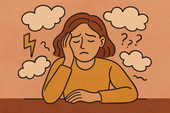
Brain Fog and Fatigue: How to Stop Blaming Yourself
Struggling with brain fog or chronic fatigue? You’re not lazy or failing. Learn how to stop blaming yourself for symptoms caused by MS or chronic illness, and start embracing a more compassionate path to healing and self-understanding.
-

Creating an Emotional Support Team You Actually Trust
Tired of feeling unsupported or misunderstood? Learn how to build an emotional support team you actually trust—with people who see you, hold space for you, and respect your boundaries, especially when living with MS or chronic illness.
-

MS, Vulnerability, and the Fear of Being Seen
Living with MS can make vulnerability feel unsafe. Learn why so many people with MS hide their struggles—and how to gently move toward authenticity, self-acceptance, and deeper connection without shame.
-
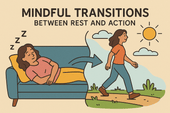
Mindful Transitions Between Rest and Action
Struggling to shift between rest and activity without guilt or overwhelm? This guide offers gentle, mindful strategies to make transitions feel more natural, intentional, and supportive of your nervous system.
-
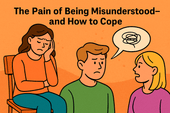
The Pain of Being Misunderstood—And How to Cope
Feeling the sting of being misunderstood? Learn why it hurts so deeply and discover practical, healing strategies to protect your truth, communicate clearly, and rebuild emotional safety when others just don’t get it.
-
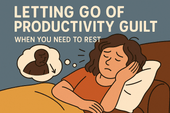
Letting Go of Productivity Guilt When You Need to Rest
Struggling with guilt every time you try to rest? Learn how to release productivity shame, understand why rest matters, and embrace a more compassionate rhythm for healing and recovery—without feeling lazy.
-

Rebuilding Energy Reserves Without Shame
-

What to Do If You Feel Emotionally Invalidated by Doctors
Feeling emotionally invalidated by your doctor can be deeply distressing. Learn how to recognize medical gaslighting, validate your own experience, and advocate for better care when you’re not being heard.
-

How to Rest Without Feeling Lazy
Rest isn’t laziness—it’s a necessary act of self-respect. Learn how to shift your mindset, let go of guilt, and embrace rest as a vital part of mental and physical well-being.
-

Redefining Energy Management as Emotional Self-Care
Energy isn’t just physical—it’s emotional. Learn how redefining energy management as emotional self-care can help you protect your peace, support your nervous system, and live more in tune with your true needs.
-
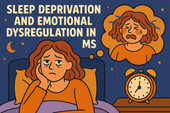
Sleep Deprivation and Emotional Dysregulation in MS
-
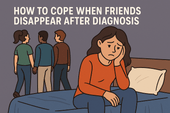
How to Cope When Friends Disappear After Diagnosis
Losing friends after a diagnosis can feel like another kind of grief. Discover why some friends disappear—and how to cope with the emotional fallout while building more supportive relationships.
-

How to Talk to Your Kids About MS Without Overwhelming Them
Struggling with how to explain MS to your kids? Learn how to talk to children of all ages about multiple sclerosis with honesty, clarity, and emotional safety—without overwhelming them.
-
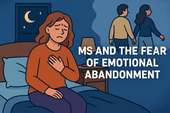
MS and the Fear of Emotional Abandonment
The fear of emotional abandonment is common for people with MS. This article explores why it happens, how it impacts your relationships, and how to create emotional safety and healing.
-
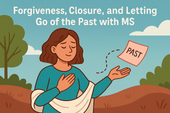
Forgiveness, Closure, and Letting Go of the Past with MS
Living with MS often brings emotional wounds from the past. Learn how forgiveness, closure, and letting go can help you heal emotionally—and reclaim peace in the present.
-
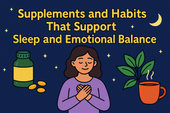
Supplements and Habits That Support Sleep and Emotional Balance
Struggling with poor sleep and emotional ups and downs? Discover calming supplements and daily habits that support deep rest and mental well-being—backed by science and easy to implement.
-
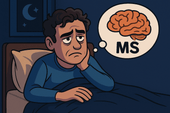
When Insomnia Feels Like Your MS Brain Won’t Turn Off
Struggling to sleep with MS? When your brain won’t shut off at night, insomnia feels relentless. Learn what causes it—and discover science-backed strategies to calm your mind and finally rest.
-

The Emotional Toll of Waking Up Tired Every Day: Why It Hurts More Than You Think
Waking up tired every day takes a deep emotional toll—from mood swings to lost motivation and self-doubt. Learn why chronic fatigue hurts more than you think and how to gently reclaim your mornings.
-
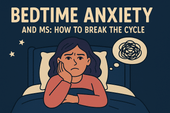
Bedtime Anxiety and MS: How to Break the Cycle
Bedtime anxiety is a common struggle for people with MS—and it’s more than just racing thoughts. Learn how MS-related stress, nervous system dysregulation, and fear of symptoms can create a cycle of sleeplessness, and discover practical, calming strategies to finally reclaim restful nights.
-
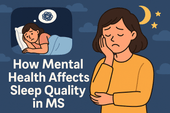
How Mental Health Affects Sleep Quality in MS: Breaking the Cycle of Fatigue and Emotional Distress
Struggling to sleep when you have MS? Discover how anxiety, depression, and neurological changes impact your rest—and what you can do to reclaim it. From CBT-I and calming supplements to lifestyle tips that support both mental health and sleep, this guide offers practical strategies for better nights.
-

Learning to Love Your Life (Even When It’s Not What You Expected)
Your life may not look how you imagined—but it’s still worth loving. Learn how to find peace, purpose, and joy in the unexpected.
-
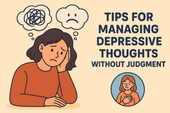
Tips for Managing Depressive Thoughts Without Judgment
Learn how to meet depressive thoughts with compassion, not shame. These gentle, research-backed tools help you manage low moods without self-judgment.
-
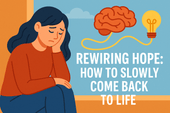
Rewiring Hope: How to Slowly Come Back to Life
Feeling emotionally numb or disconnected? Learn how to gently rebuild hope, one small sensory step and spark of life at a time.
-
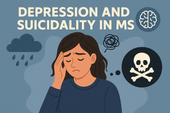
Depression and Suicidality in MS: A Conversation That Needs to Happen
Depression and suicidality in MS are real—and urgent. Learn why we must talk about it, how to spot warning signs, and where to find help and hope.
-

Finding Meaning When Life Feels Empty
Feeling disconnected or numb? Discover gentle ways to find meaning again—even in emptiness—through daily rituals, reflection, and purpose.
-
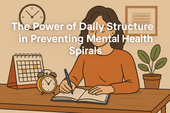
The Power of Daily Structure in Preventing Mental Health Spirals
Daily structure can prevent mental health spirals by creating safety, routine, and self-trust—especially for those with MS, depression, or anxiety.
-

Healing from Emotional Flatness with Sensory Rituals
Feeling emotionally numb or disconnected? Discover how sensory rituals can gently restore pleasure, presence, and emotional resilience.
-

The Role of Light Therapy for Seasonal Depression and MS
Can light therapy ease seasonal depression in people with MS? Discover the science, benefits, and how to use it safely for better mood and energy.
-

Medication vs Therapy: Treating MS-Related Depression Effectively
Explore whether therapy, medication, or both are best for treating MS-related depression. Understand what works, when—and why combination care is often ideal.
-

How to Support a Partner with MS and Depression
Learn how to support a partner living with MS and depression—practical tips, emotional tools, and ways to protect your own mental health too.
-

The Emotional Cost of Losing Your Old Life
Losing your old life to MS isn’t just about physical symptoms—it’s about grieving the identity, dreams, and freedom you once had. This article explores the emotional toll of invisible grief and how to begin healing without denying the pain.
-
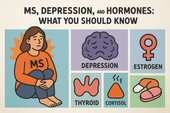
MS, Depression, and Hormones: What You Should Know
MS-related depression isn’t always just emotional—it can be hormonal. Discover how thyroid, sex, and stress hormones influence mood in MS, why women may feel worse during PMS or menopause, and what signs to look for when hormones may be driving emotional instability.
-
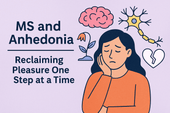
MS and Anhedonia: Reclaiming Pleasure One Step at a Time
Anhedonia—feeling emotionally flat or disconnected—is a common but misunderstood symptom of MS depression. This article explores how neuroinflammation, dopamine disruption, and fatigue can dull your sense of joy—and how small, gentle steps can help you begin to feel again.
-
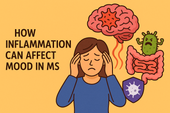
How Inflammation Can Affect Mood in MS
Mood swings and emotional numbness in MS aren’t just psychological—they can be driven by immune system inflammation. This article explores how inflammatory cytokines affect the brain, why mood changes are often biological, and what you can do to calm your nervous system from the inside out.
-
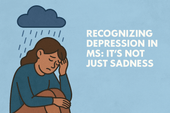
Recognizing Depression in MS: It's Not Just Sadness
Depression in multiple sclerosis (MS) is more than just sadness—it can be a neurological symptom, a side effect of inflammation, or a silent weight that masks itself as fatigue or emotional numbness. This article helps you recognize the hidden signs of MS-related depression, understand the science behind it, and explore real treatment options that support both mental and physical health.
-

Is Cryotherapy Safe for MS? Pros, Cons, and How It Compares to Cold Plunges
Cryotherapy promises quick recovery, inflammation reduction, and mood support—but is it safe for people with MS? This article breaks down the science, risks, and real-life benefits of cryotherapy for multiple sclerosis. You’ll also learn how it compares to cold plunges and which option may be better for calming flares and regulating your nervous system.
-

Can Cold Plunges Help Reduce Inflammatory Flares in MS?
Flares in multiple sclerosis (MS) are often driven by inflammation—but what if cold water could help turn down the heat? This in-depth article explores how cold plunges may help reduce flare frequency and intensity in MS by calming the immune system, lowering pro-inflammatory cytokines, and regulating the nervous system. Learn how to safely use cold exposure as part of your MS recovery routine.
-
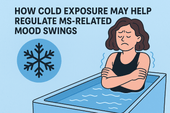
How Cold Exposure May Help Regulate MS-Related Mood Swings
Mood swings are a common but overlooked challenge in multiple sclerosis (MS). This article explores how cold exposure—like cold plunges and showers—may help regulate emotional ups and downs by calming the nervous system, reducing inflammation, and boosting mood-enhancing chemicals. Learn how to use this natural tool safely to support your mental and emotional resilience with MS.
-

MS Fatigue Toolkit: Why Cold Plunges Deserve a Spot in Your Daily Routine
Fatigue is one of the most debilitating symptoms of multiple sclerosis (MS)—often invisible, misunderstood, and overwhelming. While no single tool can eliminate it, building a personalized fatigue management toolkit can make life more manageable. One surprising contender? Cold plunges. In this article, we explore why cold water immersion might be the refresh button your nervous system needs—and how to safely make it part of your MS fatigue routine.
-
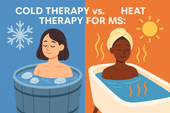
Cold Therapy vs. Heat Therapy for MS: Which One Helps More?
Managing multiple sclerosis (MS) often means navigating symptoms like fatigue, spasticity, pain, and nerve dysfunction. But when it comes to using temperature-based therapies, there’s a question many patients face: Should I be using cold or heat? In this in-depth guide, we explore the benefits, risks, and best use cases of cold therapy vs. heat therapy for MS.
-
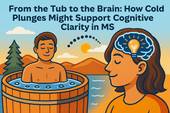
From the Tub to the Brain: How Cold Plunges Might Support Cognitive Clarity in MS
Cognitive fog is one of the most frustrating symptoms of multiple sclerosis (MS). But could cold plunges—those bracing dips into icy water—offer a surprising path to mental clarity? This article explores the emerging science behind cold exposure, brain function, and how a cold tub might help people with MS sharpen focus, lift brain fog, and reset their nervous system.
-
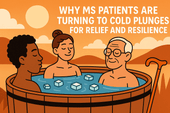
Why MS Patients Are Turning to Cold Plunges for Relief and Resilience
Cold plunges are no longer just for elite athletes and wellness influencers. A growing number of people with multiple sclerosis (MS) are turning to cold water immersion to ease symptoms, build nervous system resilience, and find calm in the chaos of chronic illness. This article explores why—and how—you might want to give it a try.
-

Cold Plunge Therapy: A Hidden Gem for People with MS?
Cold plunge therapy—once the domain of elite athletes and biohackers—is gaining attention among people with multiple sclerosis (MS). Could it help reduce inflammation, calm the nervous system, and ease MS symptoms like fatigue and spasticity? In this article, we dive deep into the science, benefits, safety, and practical application of cold plunges for MS recovery and symptom relief.
-

Finding Relief in the Midst of a Flare
MS flares can leave you feeling overwhelmed, exhausted, and mentally foggy. Cold water therapy is emerging as a promising tool to help reset the body and mind after a flare. This article explores how cold exposure supports recovery, calms the nervous system, and can be safely added to your daily routine.
-
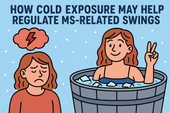
How Cold Exposure May Help Regulate MS-Related Mood Swings
Mood swings in multiple sclerosis (MS) can feel like emotional whiplash—one moment calm, the next overwhelmed, angry, or hopeless. While medications and therapy help, many people with MS are exploring natural strategies to support emotional balance. One surprising tool gaining attention? Cold exposure. In this article, we explore how cold plunges and other forms of cold therapy may regulate the nervous system, stabilize mood, and offer emotional relief for people with MS.
-
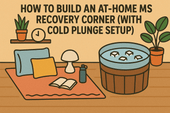
How to Build an At-Home MS Recovery Corner (with Cold Plunge Setup)
Create your personal MS recovery oasis at home—complete with a cold plunge setup. Learn how to design a space that supports healing, reduces inflammation, and helps you manage symptoms naturally.
-
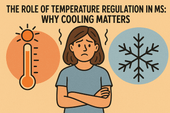
The Role of Temperature Regulation in MS: Why Cooling Matters

















































